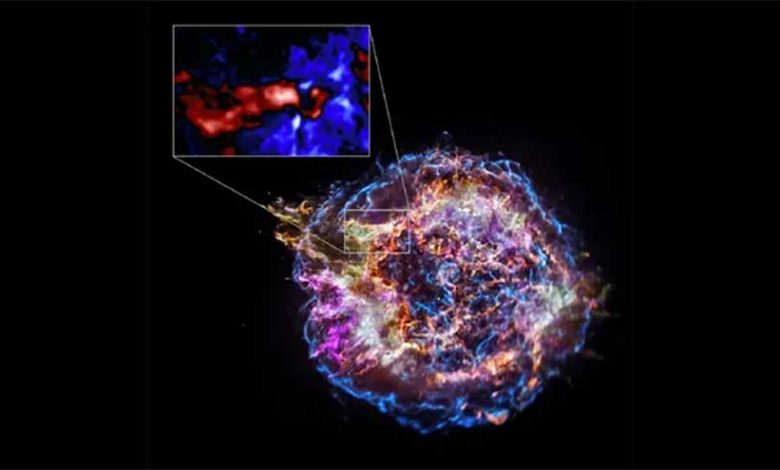Researchers discover’something amazing’ in the unstable centre of a famous supernova.

A huge star was on the verge of destruction some 11,300 years ago. It ejected its outer layers, shedding the material into space as it pulsed with energy.
It eventually burst into a supernova, and its remnant is among the most researched SNRs. More information regarding its demise is being revealed by recent observations made with the Chandra X-ray telescope. It is known as Cassiopeia A (Cas A).
Although some estimations put it as high as 30 solar masses, Cas A’s progenitor star had between 15 and 20 solar masses. Although its composition and the route it took to explode as a supernova are up for debate, it was most certainly a red supergiant. According to some astrophysicists, it might have been a Wolf-Rayet sun.
Regardless, it ultimately detonated as a core-collapse supernova. The star exploded because it could no longer sustain itself after accumulating an iron core. Around the 1660s, the light from Cas A’s death made its way to Earth.
Although there are no conclusive records of observers witnessing the supernova explosion in the sky, scientists have thoroughly examined the Cas A SNR at many wavelengths and in current times.
In a news release, lead author Sato stated, “It seems like every time we closely examine Chandra data of Cas A, we learn something new and exciting.” “Now we’ve taken that invaluable X-ray data, combined it with powerful computer models, and found something extraordinary.”
The fact that our observations of supernovae are triggered by their final explosions presents a challenge for researchers investigating them.
It is challenging to have a thorough grasp of the last few seconds before a supernova bursts.
“In recent years, theorists have paid much attention to the final interior processes within massive stars, as they can be essential for revealing neutrino-driven supernova mechanisms and other potential transients of massive star collapse,” according to the paper’s authors.
“However, it is challenging to observe directly the last hours of a massive star before explosion, since it is the supernova event that triggers the start of intense observational study.”